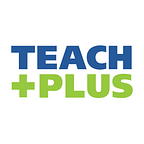Teachers Need a Toolkit After a Natural Disaster
By Mary Rose Donahue
On December 30th, the most destructive wildfire in Colorado history ripped through Boulder County. High winds blew 60 to 100 miles per hour, as over 1,000 homes and businesses were destroyed. An estimated half-billion dollars worth of property lay in smoldering ash.
The area affected by the fire is the community in which I live, teach, and coach. Over the holidays, I had flown to Illinois to spend time with my mom and siblings. I was set to fly home to Colorado, but the same storm that helped to end the fire canceled my flight. Then, despite being boosted and vaccinated, my family contracted COVID. I had to extend my stay and suddenly had time to contemplate the weight of the tragedy and my district’s response to it.
The school community I work in continues grieving its disastrous effect. Coworkers have not been able to return to work, while others, like me, are feeling the impact of another surge of COVID, with staffing difficulties in schools statewide. While planning my lessons for the return to school, I thought of the connection I now have with other educators facing the return to the classroom after a natural disaster. Hurricane Katrina, the Big Texas Freeze, and the Kentucky tornadoes have proven that schools are a critical space for responding to natural disasters. As climate change continues to shape natural disasters across the country, teachers will continue to be in a pivotal role to provide support to students and their families. But how do we support them?
On January 5th, six days after the fire, students began classes in Boulder Valley School District (BVSD). I am proud of my district’s research-backed response. BVSD canceled professional development scheduled for the first two days after winter break, offered bereavement days to displaced employees, and immediately offered social and emotional support for students and teachers. The amount of support from counselors could not have happened without the help of our two neighboring districts, St. Vrain, and Adams 12. Students and teachers impacted by the fire were given community resources, food services, and federal assistance. District emails were packed with tips on identifying levels of student trauma and recommendations for conversations with parents and their children. In the weeks following, other needs, such as transportation challenges have also been addressed.
There is no exact guide for how educators should deal with a natural disaster, but perhaps there should be. Some of my colleagues were returning or planning their return to teaching while staying in temporary housing following displacement and navigating insurance. Others were providing support for those impacted. Research, and even guidance from the CDC, shows that school is a pivotal space to reopen following a natural disaster, and we need to do everything we can to support teachers, including an awareness of their students and their own mental health.
If you live in an area with frequent disruptions from natural disasters, you probably have a rudimentary “go bag,” including batteries, clothes, a blanket, and needed medicine. Schools and districts would benefit from such a kit, including many of the initiatives my district implemented, to assist in the return to teaching following a natural disaster. The kit could be virtual and include well-researched, timely, and trauma-informed resources that could help students find grounding, provide extra time for teachers to process by reducing planning, and give teachers and students alike the gift of routine following a traumatic community event.
The kit could also include sessions in self-care, leadership, and mental health support. These can be recorded or turned into written plans to provide an example for teachers to reference as they plan and design class content curated to their students. A collection of virtual resources, such as those our district made ready for us, could then be available to educators as they do what they can in the moment to take care of their own and their students’ needs using their awareness of their unique classroom ecology.
Considering the continued impact that climate change and natural crises will have on our students and teachers, there is a distinct need for guidance on how to support our entire education community in the wake of natural disasters. Already, around 37 million children have their education disrupted each year because of environmental threats. We should be learning from districts that have responded well, including my own district. The world of education is powerful; we know what is needed, and we know what can be done. But now, we must work together to create meaningful spaces to collaborate, develop, and discuss what our students and teachers need most in the moment when they need help.
Mary Rose Donahue is a 9th and 10th grade language arts teacher at Boulder High School in Boulder, Colorado. She is a 2021–2022 Teach Plus Colorado Policy Fellow.
